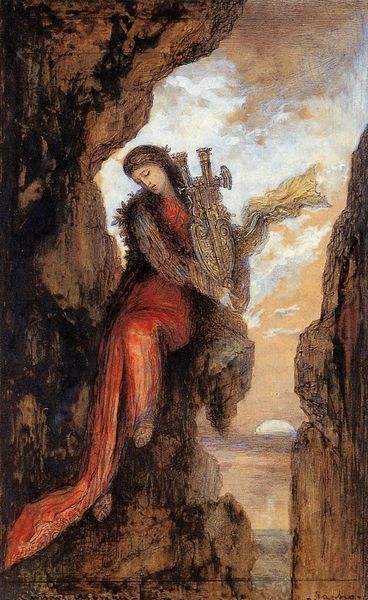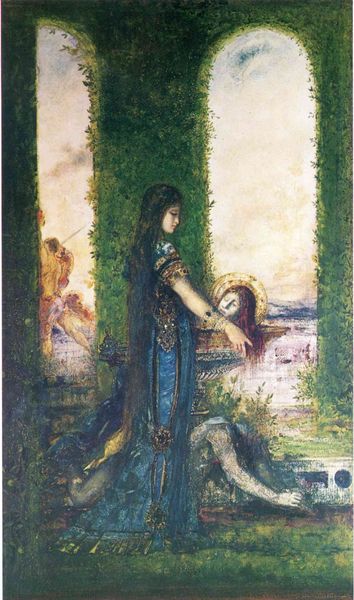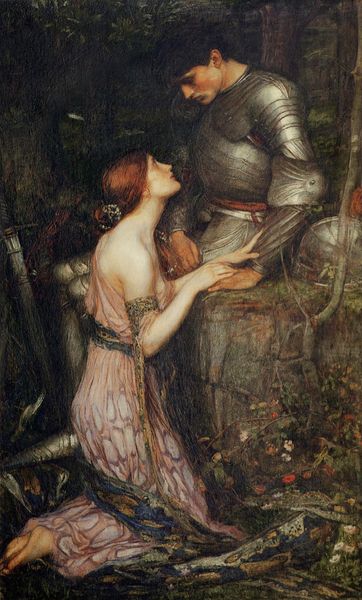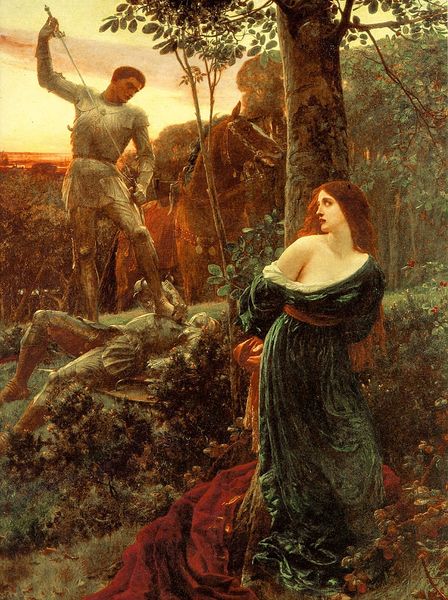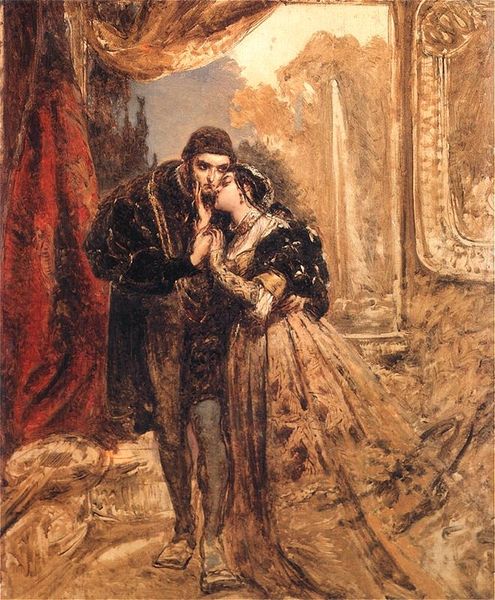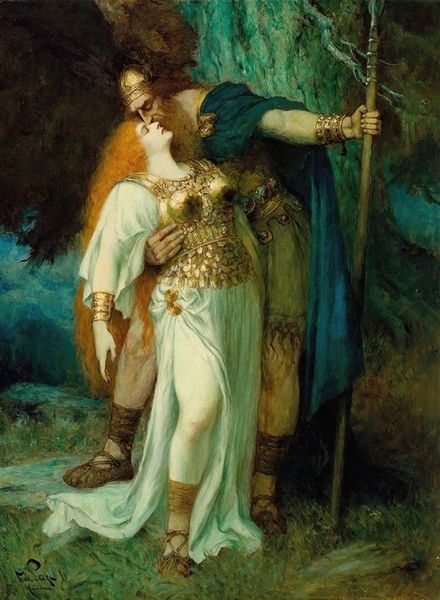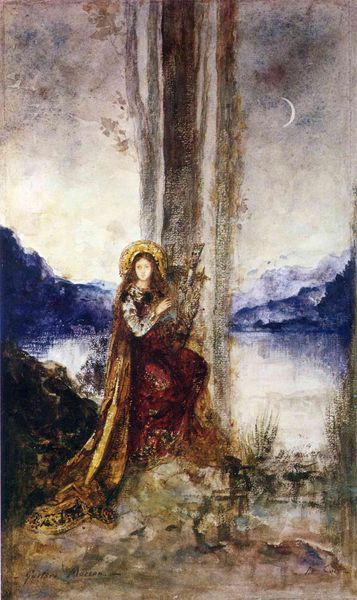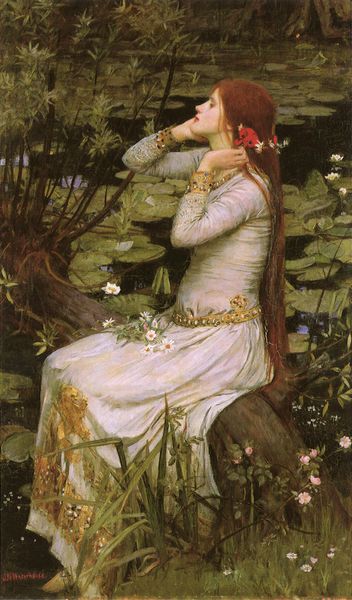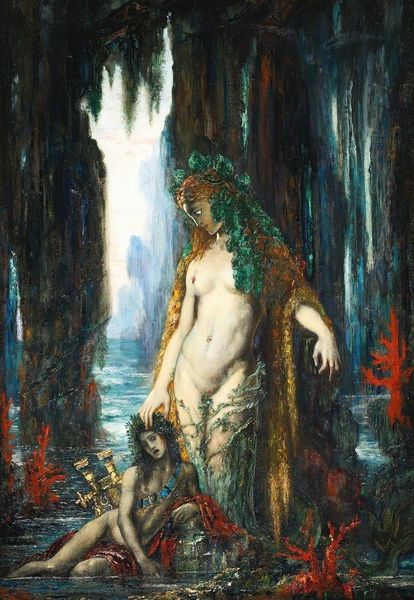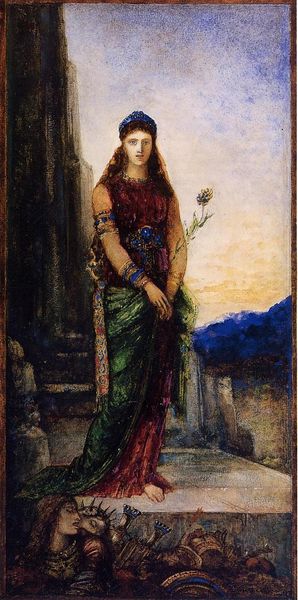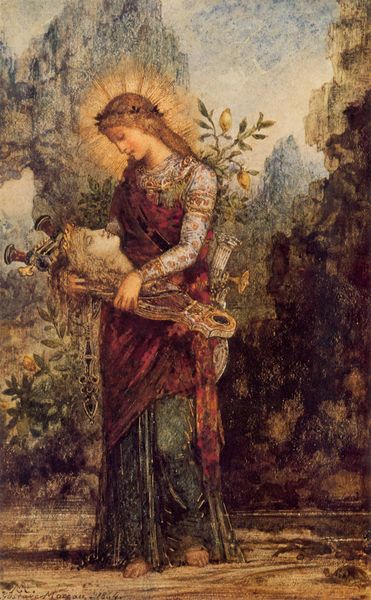
Copyright: Public domain
Editor: Gustave Moreau’s oil painting from 1875, "Young Thracian Woman Carrying the Head of Orpheus", really grabs your attention. The muted colors create this somber mood. I’m curious, how do you interpret this work through a historical lens? Curator: It's vital to consider Moreau’s era: late 19th-century France, a time of great social upheaval and artistic experimentation. He was working against the prevailing academic styles by diving deep into mythology. The painting depicts a scene of brutality and sorrow following Orpheus’s dismemberment, but what power dynamics do you see in it? Editor: Well, the Thracian woman is carrying his head, so, on the surface, it looks like a clear act of dominance. Is that correct? Curator: Precisely. The Thracian women were avenging Orpheus' rejection of them, exhibiting a public act of agency in a society often designed to deny them such power. Also consider the cultural fascination with Orpheus. Why do you think Moreau, and others, kept returning to this myth? Editor: Maybe because it speaks to the artist's struggle, and the danger of artistic expression in the face of societal rejection? Moreau did paint this during a period where artistic conventions were being challenged. Curator: Yes! Orpheus, the poet-musician, represents the power and vulnerability of the artist. Moreau's portrayal challenges us to confront not just the beauty of art, but its potential consequences within a tumultuous societal landscape. What have you gleaned from this analysis? Editor: It really adds layers. Seeing it as a statement on the artist’s role in society—it goes beyond the surface of the mythological story. Thanks for sharing your insights! Curator: My pleasure! Looking at art through history adds complexity. This piece urges us to consider the intersection between mythology, social power, and artistic expression.
Comments
No comments
Be the first to comment and join the conversation on the ultimate creative platform.
